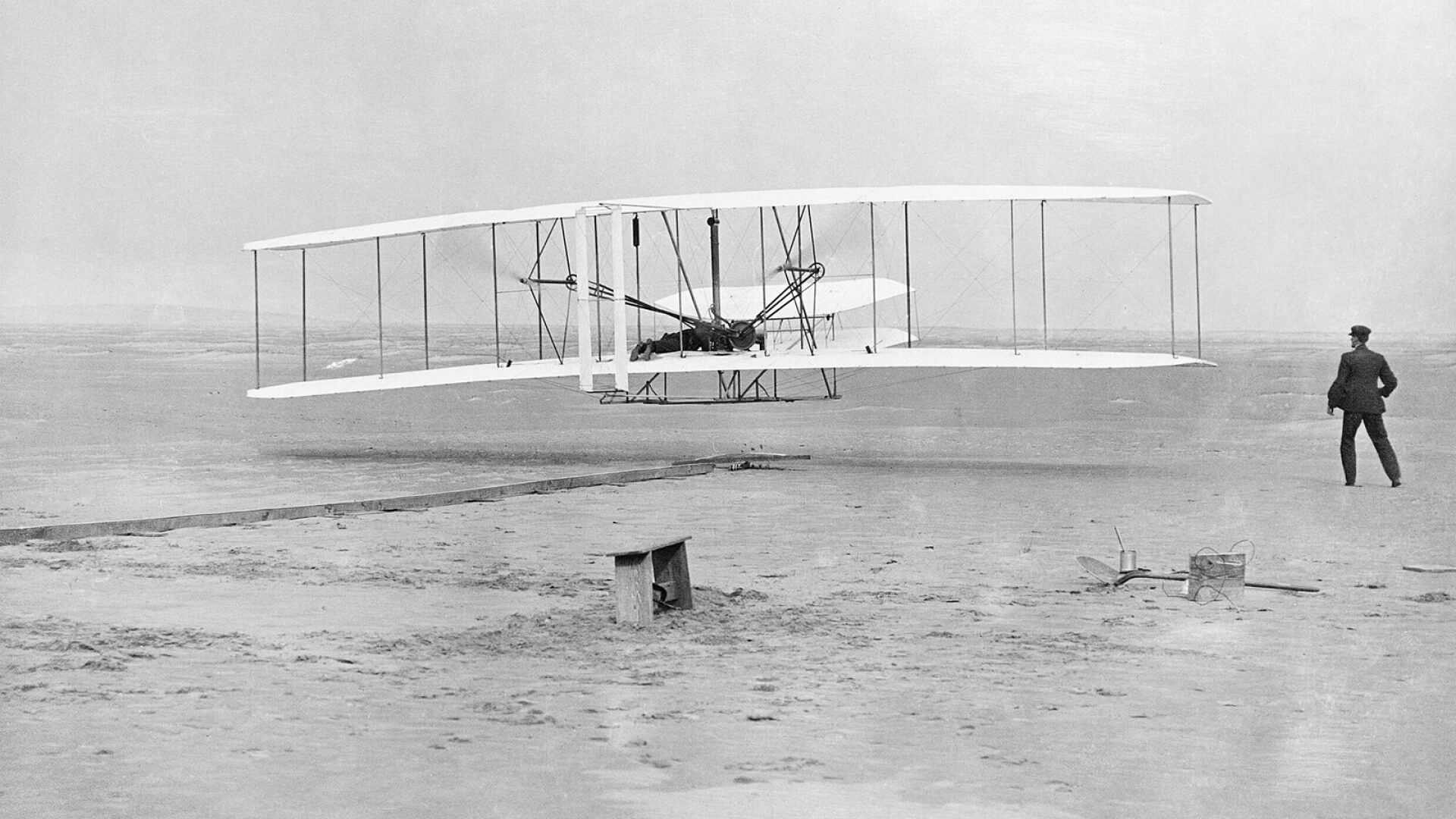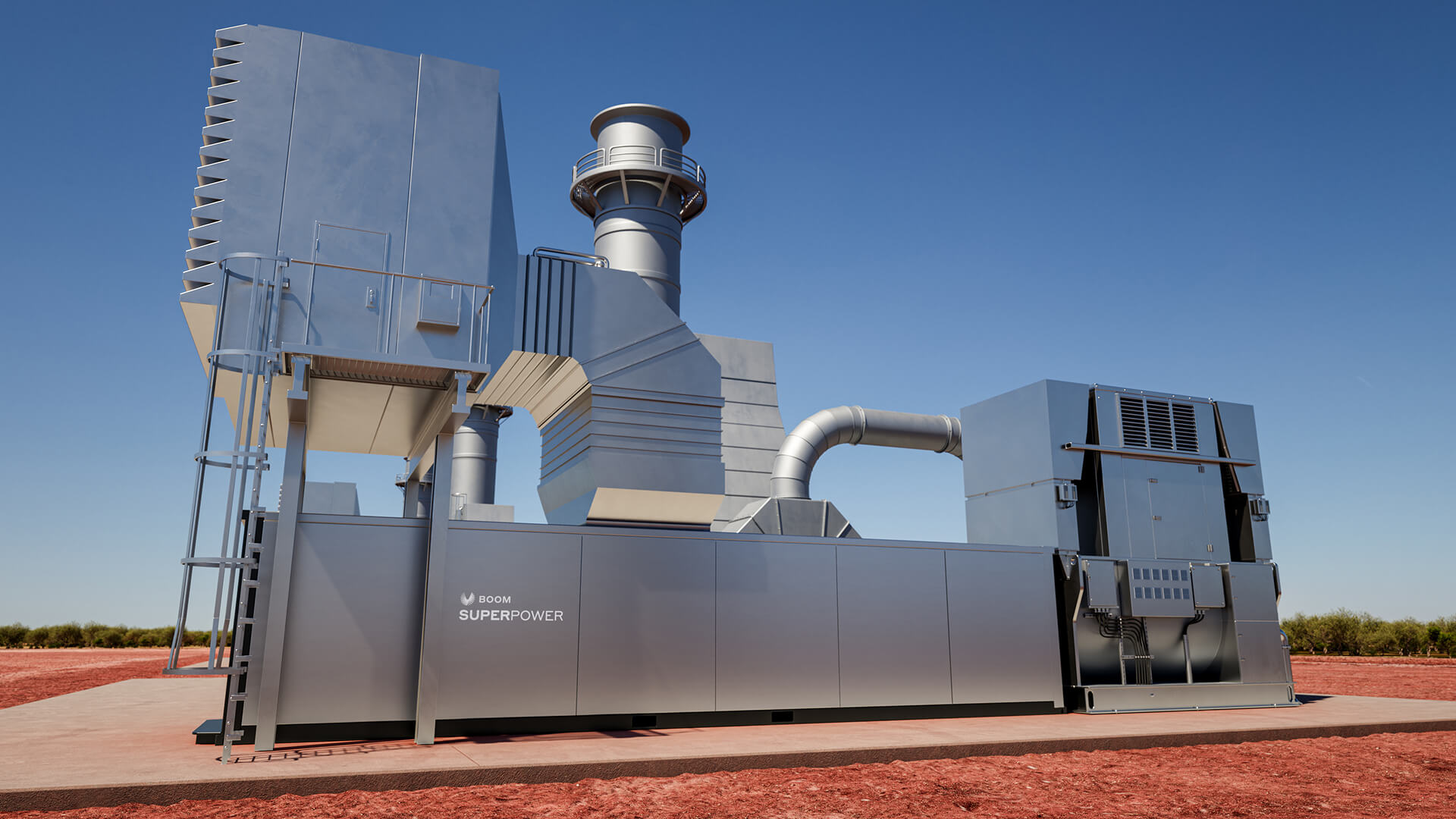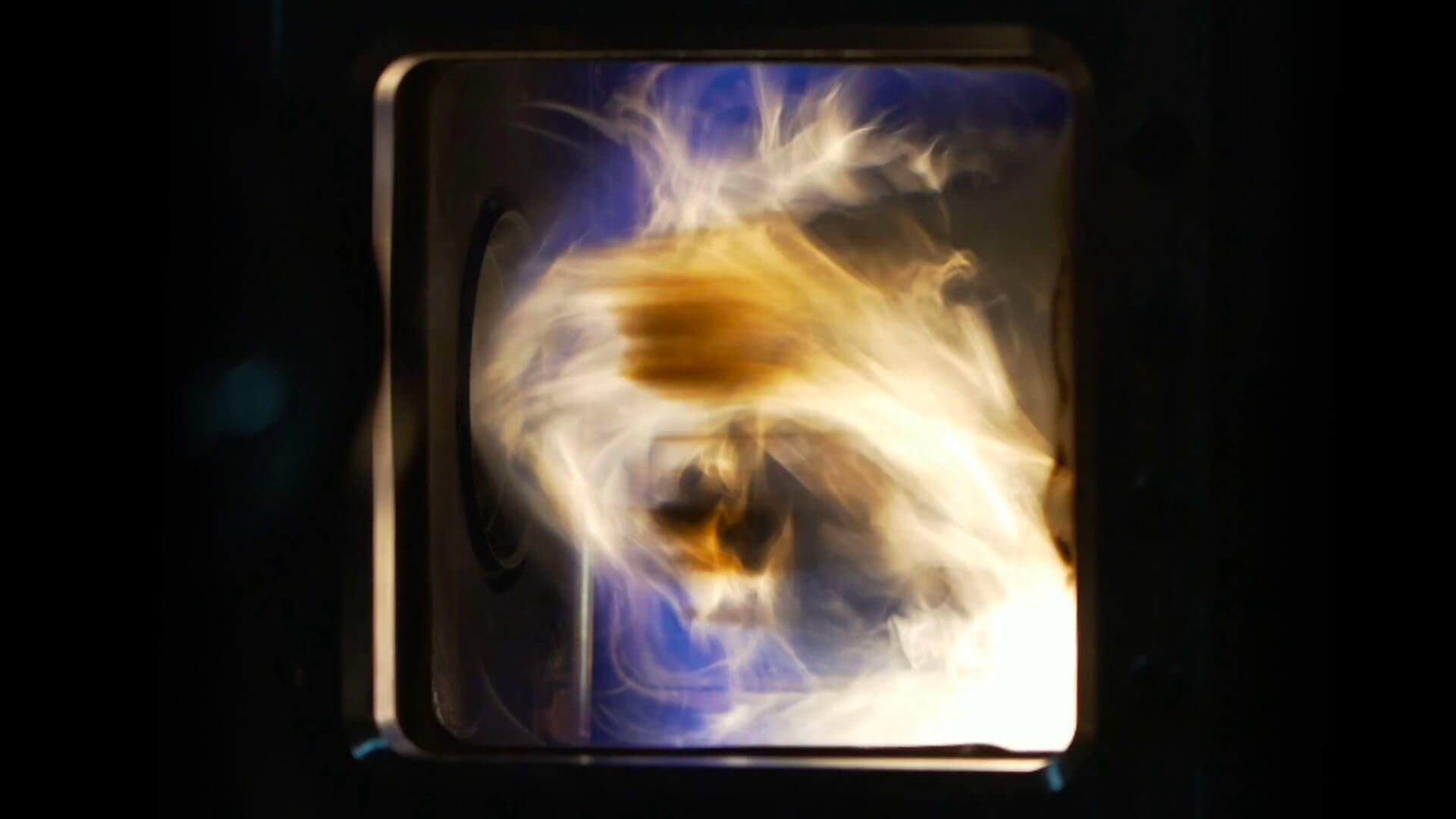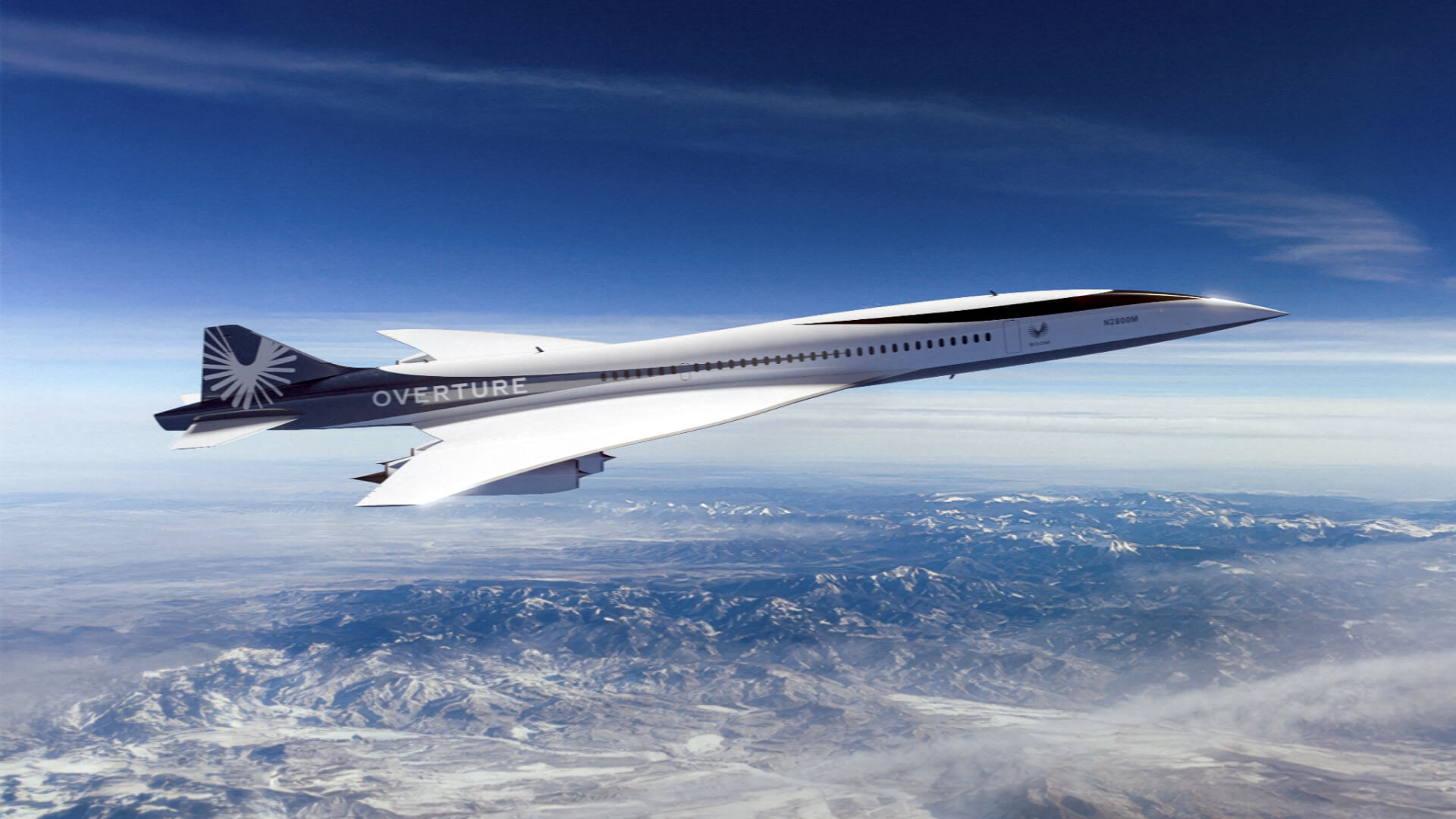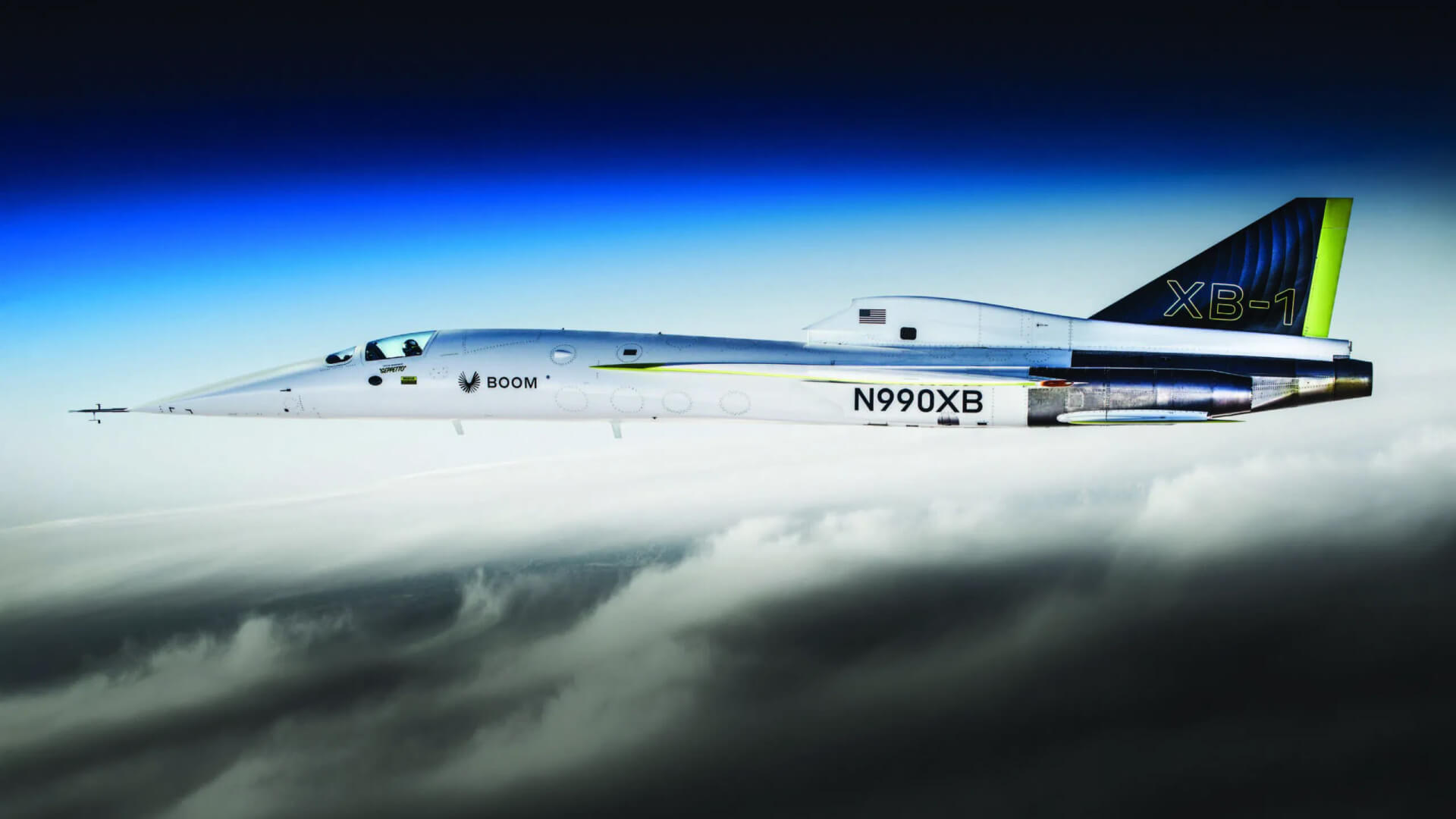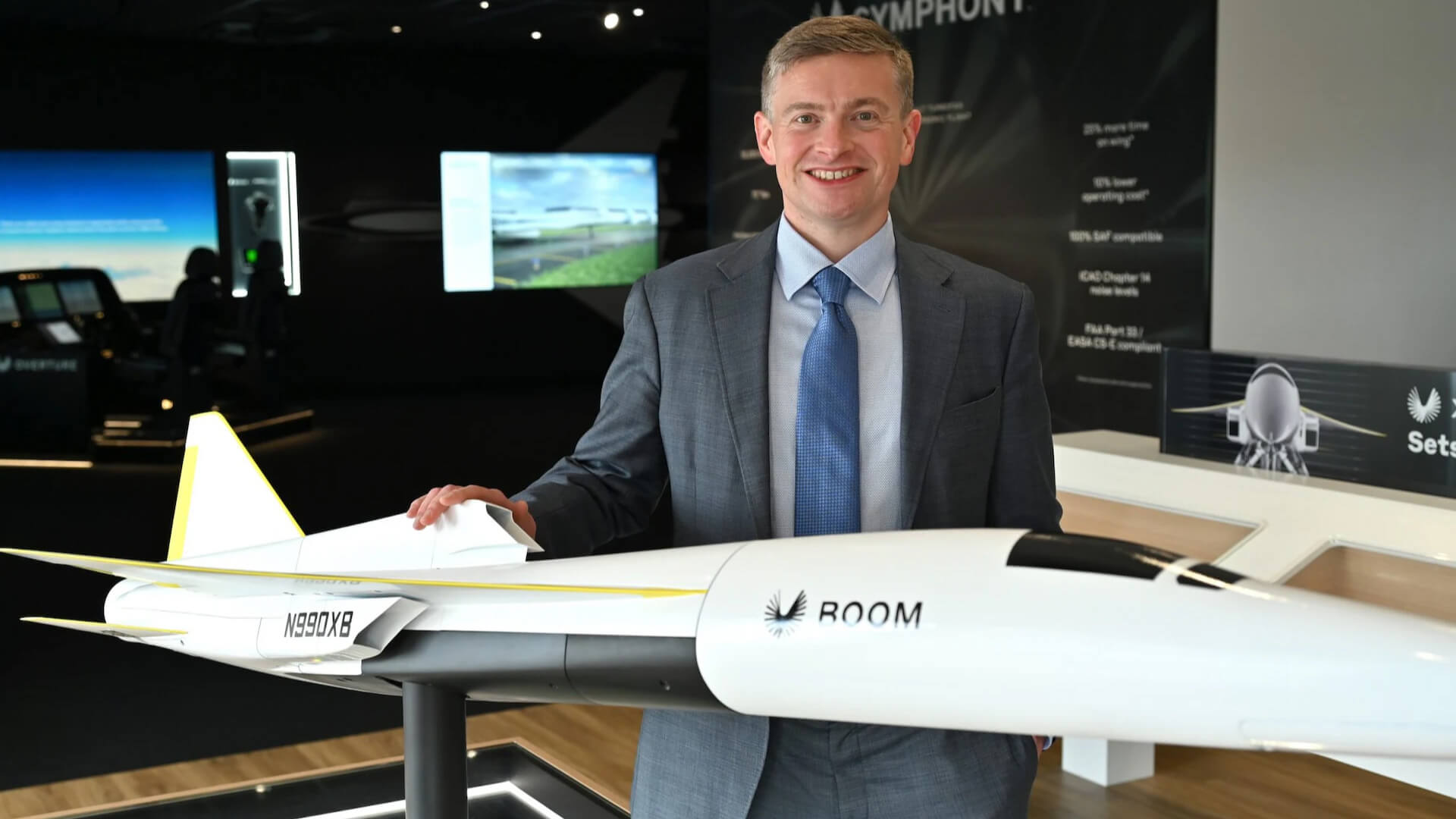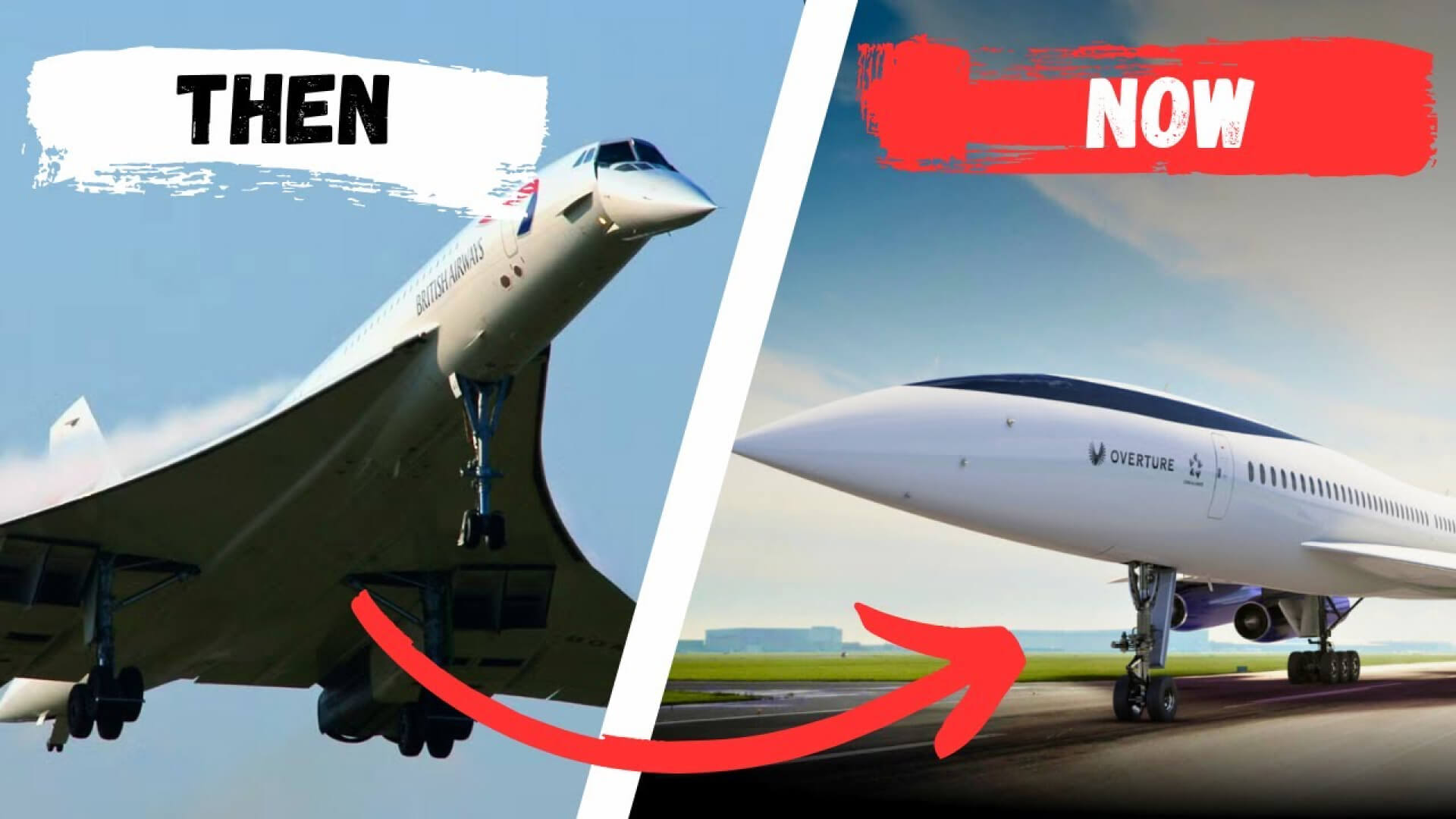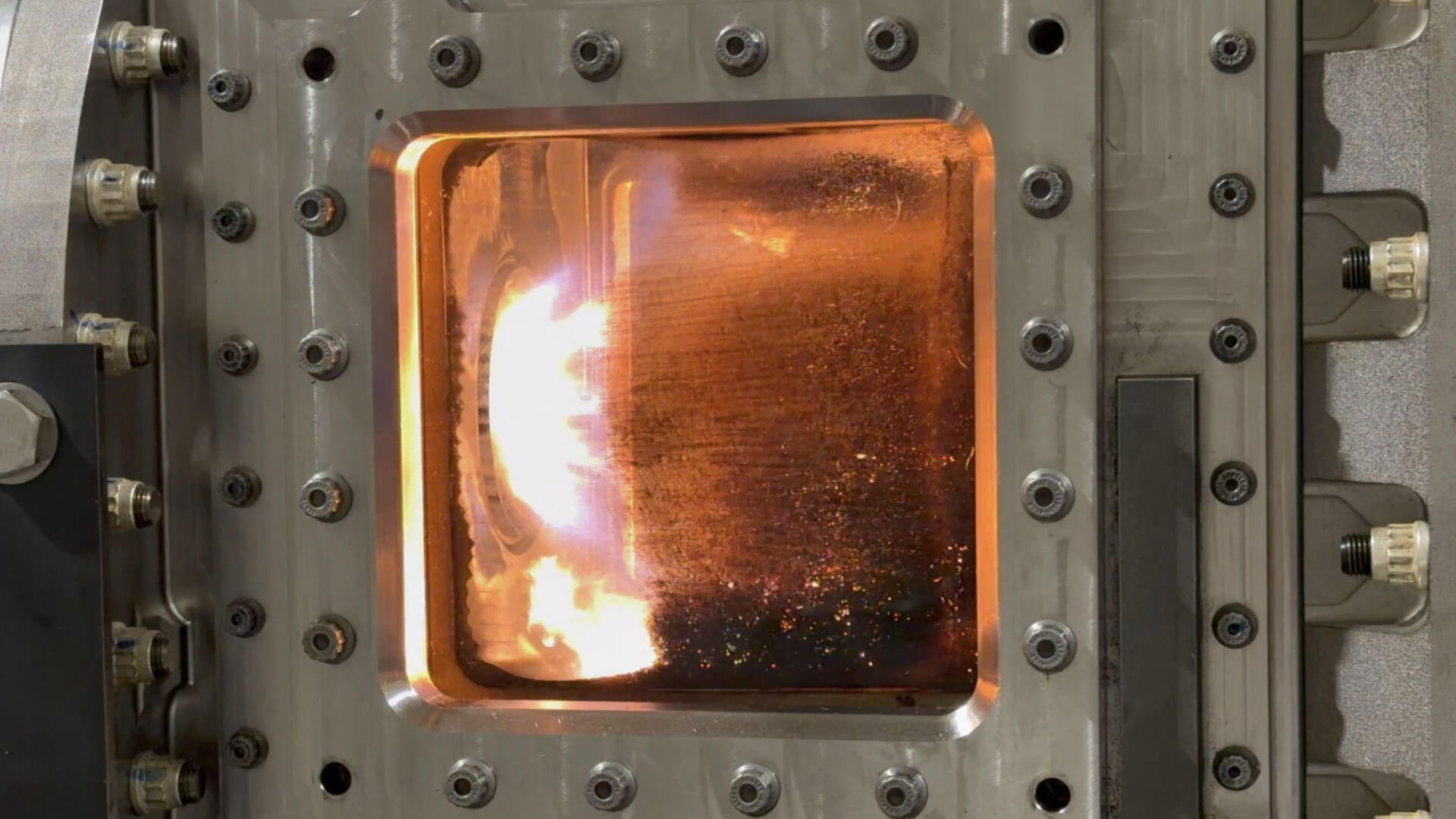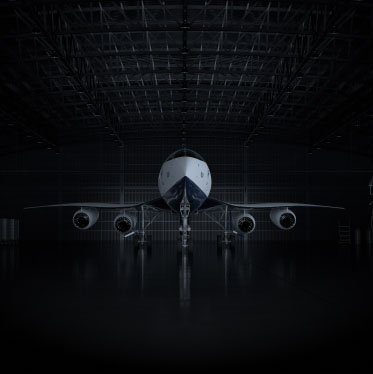Supersonic Is Here—Legally
It’s a breakthrough year for supersonic flight, and we’re only halfway through.
For more than 50 years, a federal ban has kept civilian aircraft from flying faster than the speed of sound over land, even if no one on the ground could hear it. That outdated rule didn’t just slow down planes—it slowed down progress and stifled innovation in aviation.
All of that changed on June 6, 2025, when a presidential executive order effectively repealed the ban on supersonic speed, directing the FAA to replace it with common sense noise limits. The skies are now open for boomless supersonic travel over land, marking the beginning of a new, faster era.
In 3D: The Future of Flight
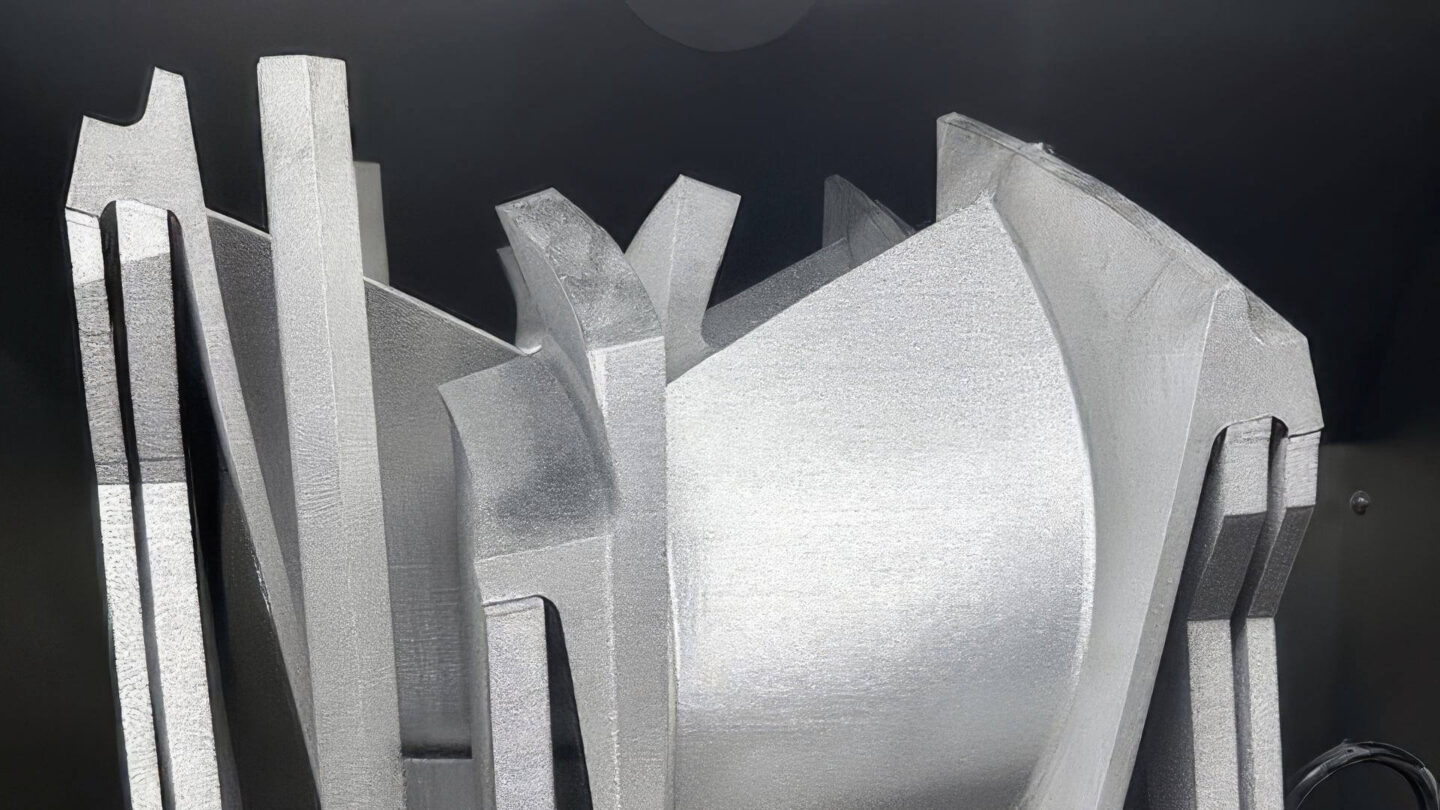
We’re accelerating Symphony engine testing with 3D printing.
In our latest FlyBy post, we go behind the scenes in Symphony’s engine testing lab, where additive manufacturing is nothing short of revolutionary. How so?
- No giant factory required: Boom engineer Ruslan Pshichenko is using a silent laser and nearly 750 pounds of nickel-based powder to print key sprint core components right inside a compact industrial 3D printer.
- Rapid iteration and results: This sprint core—housing the high-pressure compressor, combustor, and turbine—lets Boom validate Symphony’s toughest sections faster and more cost-effectively than traditional builds.
- Engineered for extremes: A total of 193 metallic parts—including turbine blades, vanes, seals, and support frames—are being printed with high-performance superalloys like Haynes® 282®, designed to withstand the punishing heat and stress inside a supersonic engine.
- From test to flight: While these printed parts are for ground testing only, Boom is building invaluable know-how in FAA-grade additive manufacturing—laying the groundwork for flight-ready components in the future.
(FYI – during XB-1’s development, we used 3D printing for functional prototyping, tooling support, and on-demand flight hardware manufacturing. It’s not our first rodeo.)
Boom Partners On Deck
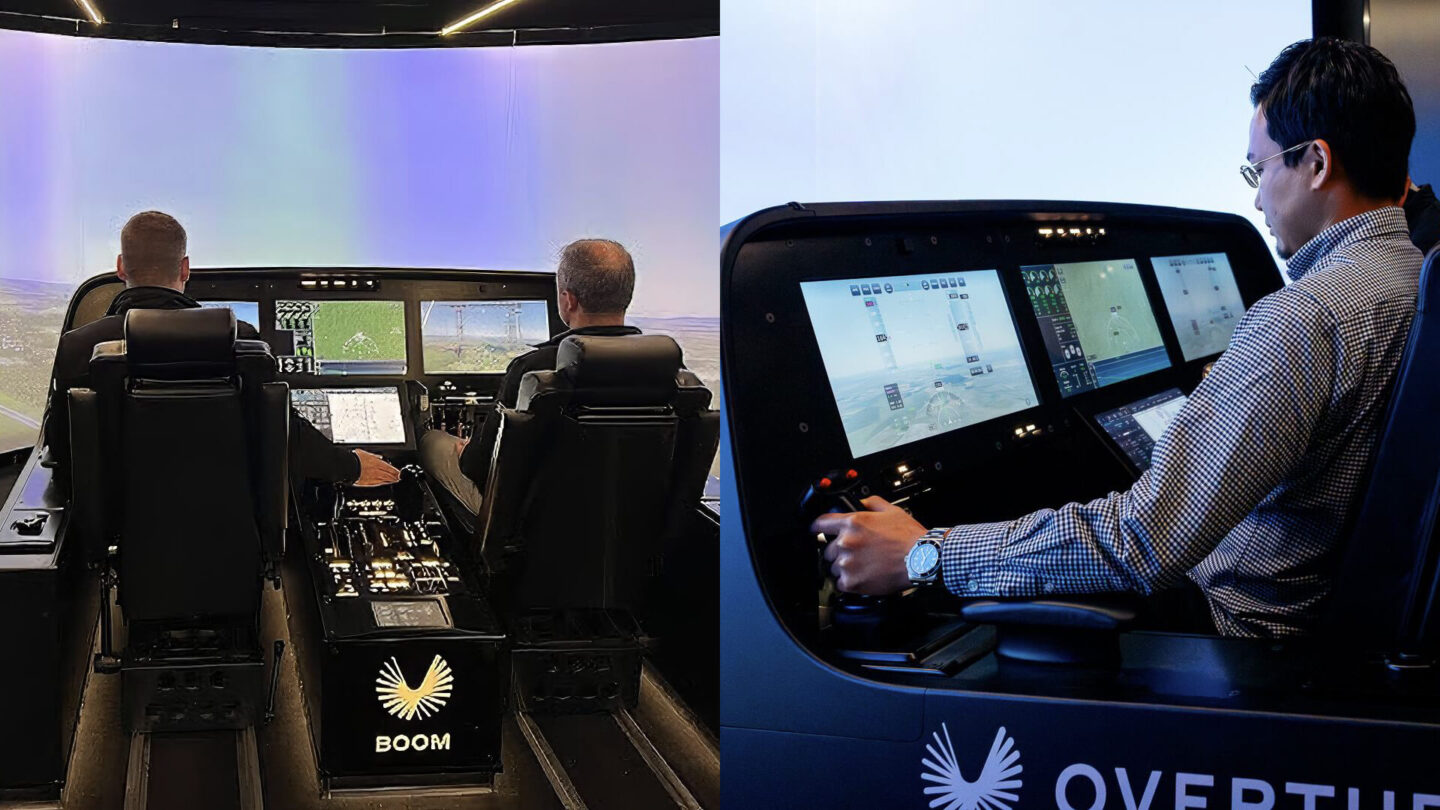
It was an honor to welcome our airline partners to Boom’s headquarters. Both United Airlines and Japan Airlines paid a visit to Boom’s offices in Denver, Colorado, where they test-drove Overture’s capabilities in Boom’s flight simulator. It’s always a privilege to share our progress with partners—and it was a treat to see them take the left seat in the Overture flight deck.
How the Supersonic Ban Froze Progress In Aviation
Boom CEO Blake Scholl joined Bloomberg’s Odd Lots podcast for a conversation on the future of flight, the history of supersonic, and a pivotal truth in aviation history: Concorde didn’t fail because of a lack of demand—it failed because of economics, poor central planning, technology limits, and a ban that shut the door on progress, stalling innovation in commercial aviation.
“In 1973, we did the worst thing I think we’ve ever done in the history of regulation…which is we banned supersonic flight over the US. And what that did was basically outlaw the way [supersonic passenger transport] should have come to market.”
Blake goes on to break down how that one decision didn’t just ground Concorde—it froze a generation of forward movement. But now, finally, the industry is waking up.
“Just because Concorde didn’t work doesn’t mean supersonic can’t. We’re proving it’s not only possible—it’s inevitable.”
Listen to the full episode as Blake unpacks the case for bringing back speed: what’s changed, what Boom is building, and why this time, it’s not just viable, it’s necessary.
Don’t Miss: Boom Featured in WSJ
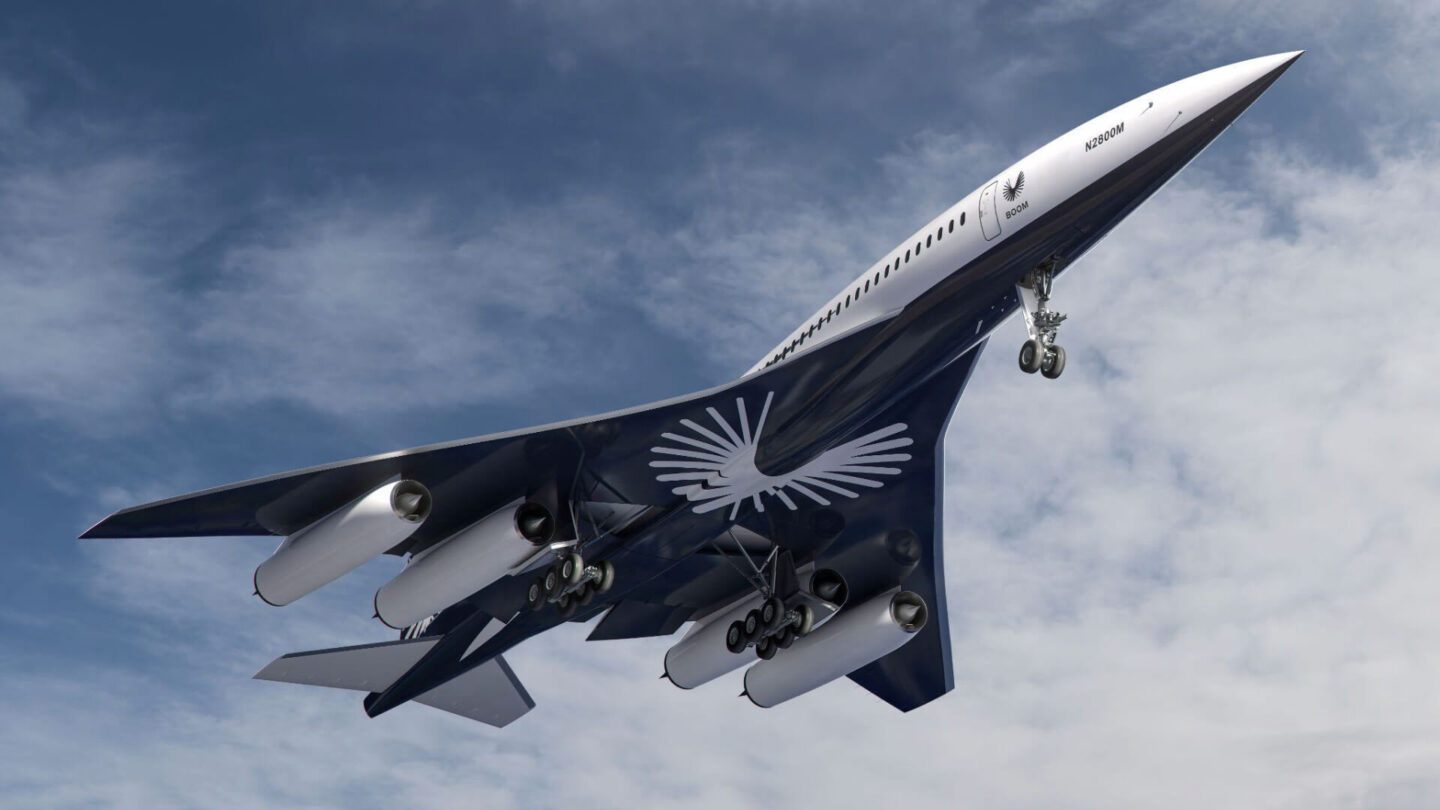
In June, The Wall Street Journal dropped a major feature on Boom, titled “New York to Paris in Under Four Hours? Inside the Effort to Build the Next Concorde.”
The piece dives deep into Overture’s design, the breakthrough flight of XB-1, and how Boom is tackling the challenges Concorde couldn’t. It also highlights key strategic shifts, like the decision to build the Symphony engine in-house, and explains why now—with new tech, changing policy, and strong airline demand—is the right moment to bring supersonic travel back, and why Boom is the right company for the mission.
“I think of this as a company that’s not just building a cheaper supersonic plane,” said Boom board member and former Boeing CEO Phil Condit. “But rather bringing a modern, Silicon Valley approach to disrupting aerospace in the way Tesla did in the automotive industry.”
Supersonic Swag
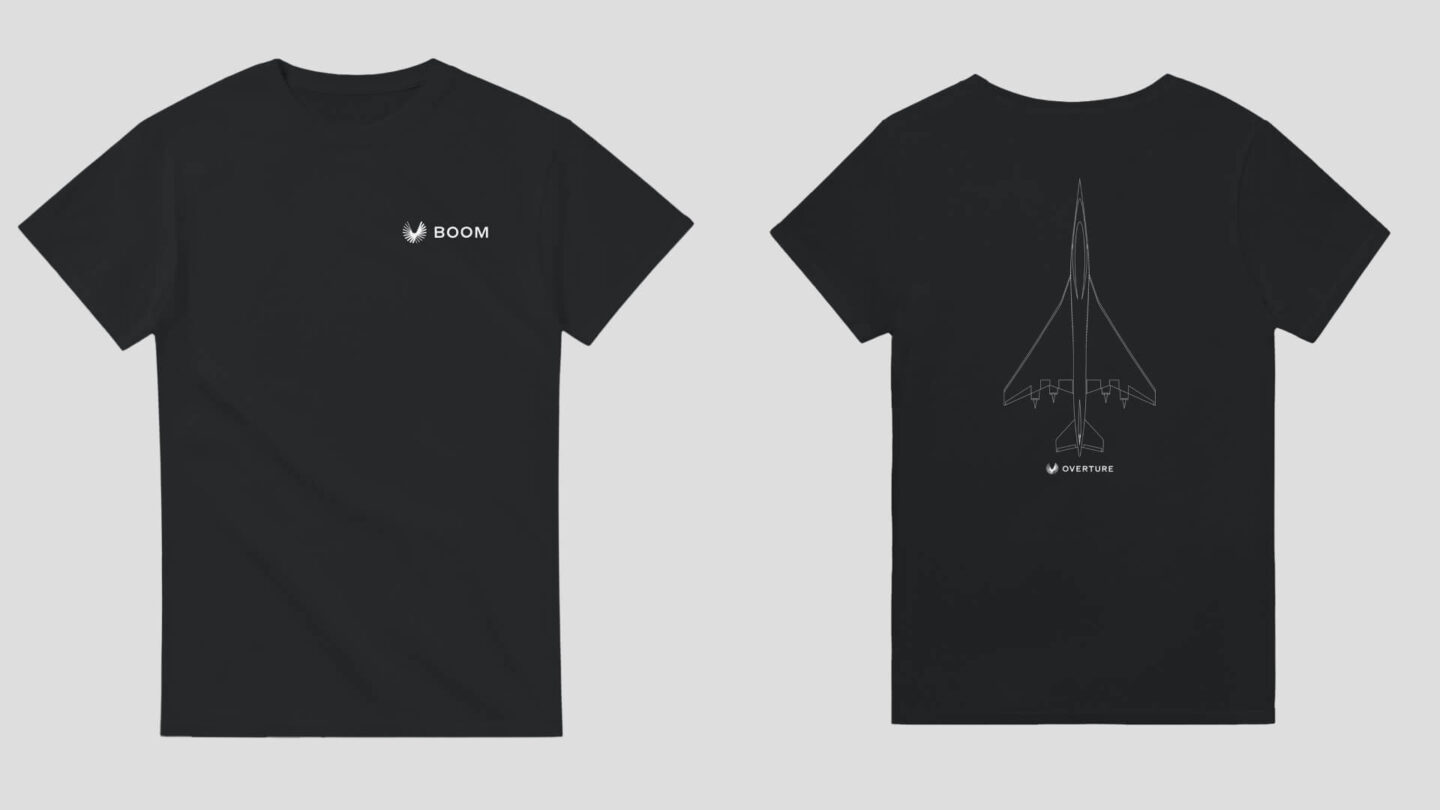
Looking to rep the future of flight? Our Boom shop has you covered with tees, mission patches, stickers, model aircraft, and more! Treat yourself to gear that goes the distance.

